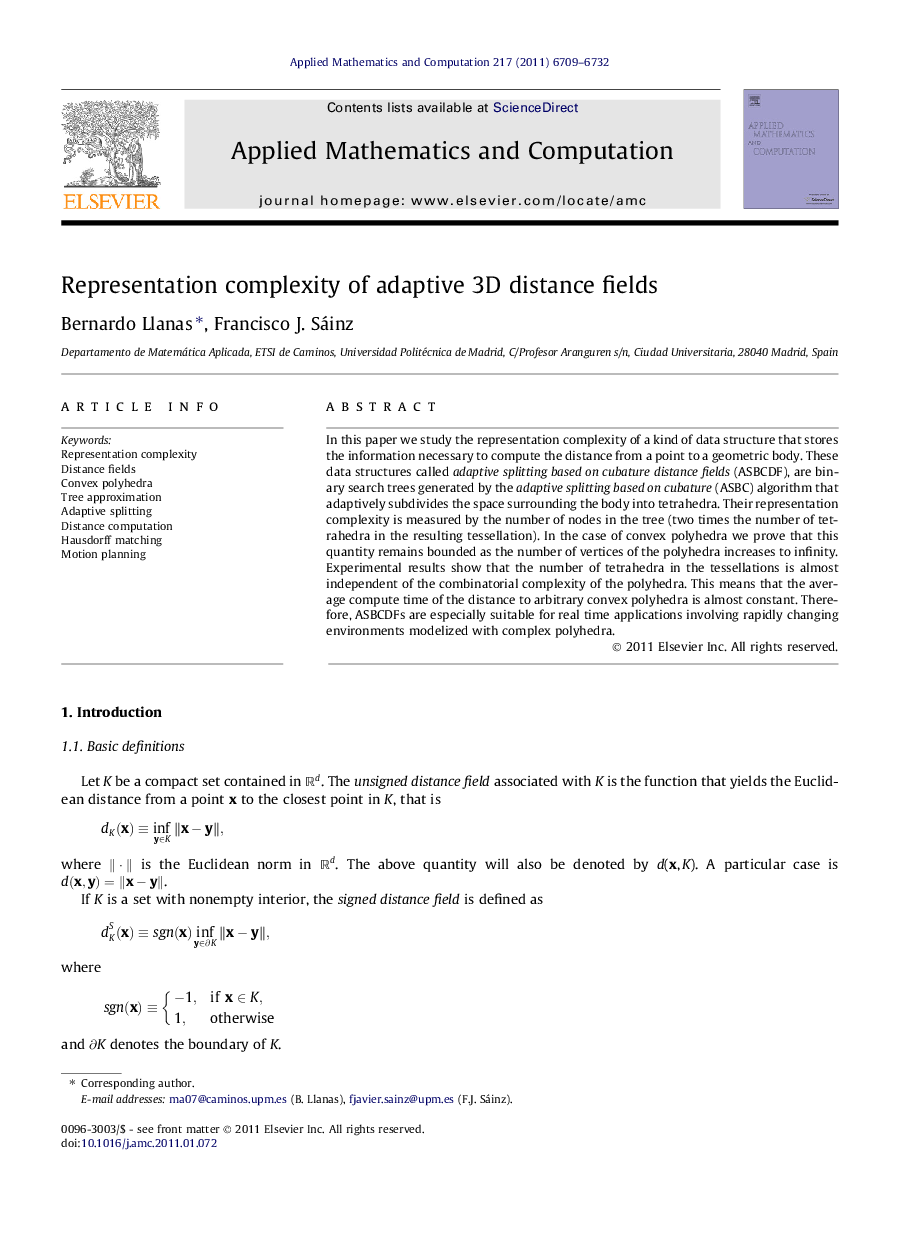| Article ID | Journal | Published Year | Pages | File Type |
|---|---|---|---|---|
| 4632179 | Applied Mathematics and Computation | 2011 | 24 Pages |
In this paper we study the representation complexity of a kind of data structure that stores the information necessary to compute the distance from a point to a geometric body. These data structures called adaptive splitting based on cubature distance fields (ASBCDF), are binary search trees generated by the adaptive splitting based on cubature (ASBC) algorithm that adaptively subdivides the space surrounding the body into tetrahedra. Their representation complexity is measured by the number of nodes in the tree (two times the number of tetrahedra in the resulting tessellation). In the case of convex polyhedra we prove that this quantity remains bounded as the number of vertices of the polyhedra increases to infinity. Experimental results show that the number of tetrahedra in the tessellations is almost independent of the combinatorial complexity of the polyhedra. This means that the average compute time of the distance to arbitrary convex polyhedra is almost constant. Therefore, ASBCDFs are especially suitable for real time applications involving rapidly changing environments modelized with complex polyhedra.
